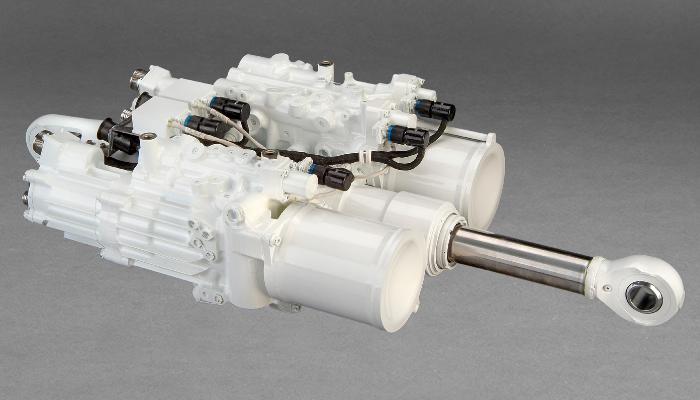Aircraft actuators play a critical but often overlooked role in aircraft control and operation. These mechanical devices are responsible for manipulating flight controls and other systems to ensure safe and reliable flight. Though small in size, actuators perform functions that are essential to flight.
What are Aircraft Actuators?
An aircraft actuator is a mechanical device used to generate and control motion on an aircraft. Actuators receive electrical, hydraulic or pneumatic inputs and convert them into precise mechanical movement. Common applications include moving flight control surfaces like flaps, ailerons and elevators. Actuators are also used to deploy landing gear, open and close doors and hatches, and position thrust reversers.
At their core, most aircraft actuators contain an electric motor which drives a gear train or screw jack assembly. This mechanical amplification allows the actuator to produce high output forces and precisely position components despite the small size of the electric motor. Actuators provide the interface between an aircraft’s flight control computer and physical flight control surfaces. Without actuators translating electrical commands into physical motion, aircraft would be unable to change direction or altitude.
Types of Actuators Used in Aircraft
There are three main types of actuators used across modern aircraft:
– Hydraulic Actuators: Hydraulic actuators are the most common. They use high-pressure hydraulic fluid to create powerful linear or rotary motion. Hydraulic actuators can move very heavy flight control surfaces and other components.
– Electric Actuators: Electric actuators are directly powered by electric motors. While not as powerful as hydraulic actuators, electric designs are growing in use for applications like flaps and slats. They eliminate hydraulic fluid lines and pumps.
– Pneumatic Actuators: Rarely used for primary flight controls, pneumatic Actuators use compressed air or nitrogen gas to create motion. Common applications include cargo door actuators.
Actuator Design and Components
Regardless of the power source, most aircraft actuators share a similar internal design. Common components include:
– Electric Motor: Provides rotational torque to drive gearing or a linear screwjack. Motors range from fractional to multi-hp.
– Gear Train: A series of gears translates rotational motion to linear motion. Reduction gears amplify torque output.
– Screw Jack: A critical positioning component, the screw jack precisely adjusts location via motorized rotation of a lead screw.
– Bearings: Robust bearings guide linear motion and withstand high side loads during operation and failure scenarios.
– Shaft/Rod: Transmits rotary or linear motion to connect the actuator body to external flight controls.
– Feedback Sensors: Potentiometers or encoders provide position feedback to autopilot systems.
Role of Actuators in Flight Control
Actuators play a vital role in flight control by enabling automated and fly-by-wire flight operations:
– Primary Flight Controls: Actuators move flight control surfaces like ailerons, elevators and rudders to change the aircraft’s attitude and direction.
– High-Lift Devices: Actuators deploy flaps and slats to lower the aircraft’s stall speed during takeoff, landing and low-speed flight.
– Thrust Reversing: Actuators position thrust reversers after landing to help slow the aircraft during rollout.
– Landing Gear: Actuators deploy the main landing gear and nose gear for takeoff and retraction for cruise flight.
– Auxiliary Controls: Actuators control speed brakes, spoilers and other systems for added control authority.
– Utilities: Actuators inside the aircraft operate doors, hatches, valves and other movable components.
Actuator Redundancy and Reliability
Given their critical role, aircraft actuators are highly redundant and reliable. Many primary flight control actuators have dual electric motor drives and position indicating sensors. Systems are isolated and fail-operational to prevent single actuator failures from causing loss of control. Actuator life requirements can reach over 100,000 cycles to match aircraft service lives. With evolving fly-by-wire technology, actuators are enabling more autonomous and quiet aircraft operations than ever before. Though small in stature, actuators are truly the unsung workhorses that bring aircraft to life.
*Note:
1. Source: Coherent Market Insights, Public sources, Desk research
2. We have leveraged AI tools to mine information and compile it

